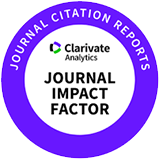Broiler detection system for multi-tier broiler house using a cloud platform
Abstract
Broilers are bred at a higher density than large livestock, and their relatively small size makes monitoring challenging, requiring a reliable, cost-effective automatic monitoring system for precision farming. Particularly in the case of managing large-scale broiler breeding systems, such as multi-tier broiler houses, it is important to reduce investment in computing facilities and to improve productivity through automatic monitoring technology. However, financial ability of farmers to equip and manage the high-specification computing equipment required by these technologies is limited, necessitating development of affordable monitoring systems. We there propose a lightweight broiler-detection model that augments YOLOv5 with two efficiency modules: Bi-directional Feature Pyramid Network (BiFPN), which fuses multi-scale features with learnable weights to sharpen small-object and GhostNet, which replaces many convolutions with inexpensive “ghost” operations to cut parameters. Performance was benchmarked against the original YOLOv5 on a high-spec local GPU machine and CPU based cloud platform. The proposed model attained 90.5% mAP@0.5, marginally below the baseline’s 92.8%, yet inference time dropped by 30% on CPU (50.9 ms) and 50% on GPU (1.8 ms). By implementing lightweight models, farmers can utilize monitoring systems from anywhere via mobile devices, leveraging cloud-based technology. This eliminates the necessity for expensive hardware, offering an affordable and practical solution for improving farming management.
















